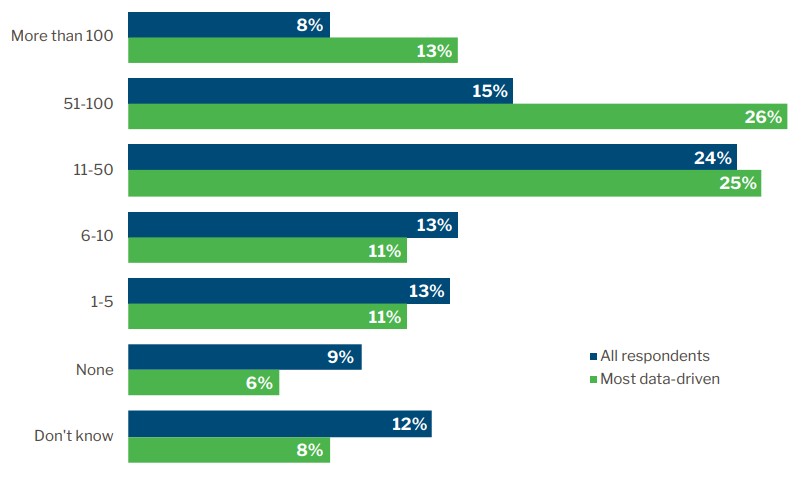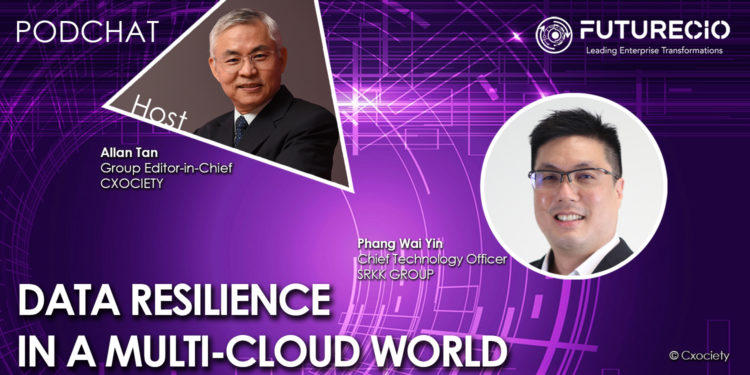Organisations are migrating to the cloud to improve efficiencies and scale with greater digital transformation. Cloud plans and adoption have accelerated during the pandemic, with many in Asia considering a hybrid multi-cloud strategy to optimise the management of SaaS applications while ensuring business continuance from existing legacy and meeting remote work needs.
This preference to have a hybrid, multi-cloud strategy brings with it one challenge that was already an issue with the adoption of distributed computing but made so much more complex with the adoption of cloud computing and as-a-service technology.
The ChaosSearch report, Modernising Data Management for the Hybrid, Multi-Cloud World, lists 7 considerations for hybrid, multi-cloud data management: skills, data governance, data integration, data security, data availability, performance and tools. FutureCIO offers one other consideration – data resilience.
Phang Wai Yin, chief technology officer for SRKK Group, defines data resilience as an organisation’s ability to ensure business continuity from unexpected disruption. It focuses on the recovery strategy beyond backups. This requires a standardised and automated approach across the entire data landscape.
He commented that while in hybrid, access control is critical. “Personal work or corporate-owned devices must undergo a management policy to ensure devices can rightfully access the data,” he opined.
He went on to add that a typical organisation can leverage up to five different cloud platforms, and 100 different SaaS applications. Hence, a good robust solution is needed to manage the challenges of data repositories.
The make-up of data resilient strategies
Phang noted that in any digital transformation journey, three things must always be considered: technology, people and processes.
He explained that organisations need to pick the right technology platform as the basis of their data resiliency strategy. He further opined that a single vendor solution is proven to be cost-effective.
He also stressed that having or hiring the right talent to leverage the technology and manage the security is also fundamental to a data resilient strategy.
He cautioned that the process of recovery can be complicated and requires better orchestration especially if technology can automate the whole process end-to-end.
Data resilience when data is scattered
The 451 Research paper, Information-driven compliance and insight, revealed that up to 23% of organisations surveyed acknowledged that data is stored in more than 50 distinct silos. Even more perplexing, for organisations that identified themselves as being highly data-driven, that number goes up to 39%, regardless of organisation size.

Source: 451 Research's Voice of the Enterprise: Data & Analytics 2H2019
The analyst concluded that in the pursuit to aggressively leverage information, ‘perfect’ architecture is often a casualty. Sometimes, silos are artefacts of long-standing business structure, but for highly data-driven organisations, they are often simply the by-product of rapid adoption and nimble methodology. Paradoxically, the organisations that depend on data the most can end up with data environments that are the most difficult to manage.
Can it be possible to achieve data resilience when so much of an organisation’s data is scattered?
Phang believes it is feasible to do so given the level of technology and capabilities that is available today.
“You need the right platform to centrally manage all your data from different sources and in all the different locations. We can then apply all the other technologies, backups and ransomware,” he suggested.
Leverage cloud for resilience
Asked if it is possible to leverage SaaS solutions to achieve resilience, Phang commented that there may be a handful of such SaaS apps that offer data resilience, but it’s not safe to assume that all SaaS apps have built-in data resiliency protection.
“There is a difference between how these SaaS apps look at their data recovery strategy. Most are short-term data recovery. But as we look at data resiliency it needs to have a long-term lookout or strategy,” he added.
The starting point of data resilience
Phang suggests that an organisation draft a roadmap for its data resiliency strategy. He believed that leaders must lead the way by defining the objectives and identifying the problems and outcomes they want to achieve.
He stressed the importance of being of the problems by pulling up an impact versus effort matrix. From here, plot out the solution. Identify priorities and investments. Consider the available talent.
Finally, once the strategy is in place, adoption and change management must happen. There needs to be a change champion.
Leading the charge
That data is important is not being questioned. The challenge for many organisations is that everyone sees their data as their own – declaring ownership of the data – but not accepting the responsibility for things like governance and data protection.
Phang believes that there is a need for someone in the organisation to take charge of data resilience. He points to the business leader as the best person for the job.

“I believe in a top-down approach to lead and execute the entire journey. You need a common facilitator, and in most cases, it falls under the purview of IT. The IT manager can then facilitate and coordinate this conversation with the different departments. The IT manager must be supported with resources, in-house or an outsource vendor to consult and advise."
Phang Wai Yin
“Then a change champion who is articulate to persuade those who are resistant to change,” he concluded.
Click on the PodChat player and listen to Phang elaborate on how organisations can achieve data resilience in a multi-cloud world
- Define data resilience in the context of today’s (a) hybrid work and (b) hybrid multi-cloud environment.
- What is the make-up of a data resilient strategy?
- Given that much of an organisation’s data is scattered across applications (on-premises and in the cloud), company and personal data repositories, is it feasible to achieve data resilience?
- A Productiv 2021 report says the average app portfolio is about 254 apps, is it possible to leverage SaaS solutions to achieve resilience?
- What needs to happen to set your path toward data resilience?
- Who should lead this journey? Who should be part of the team in charge of data resilience?





